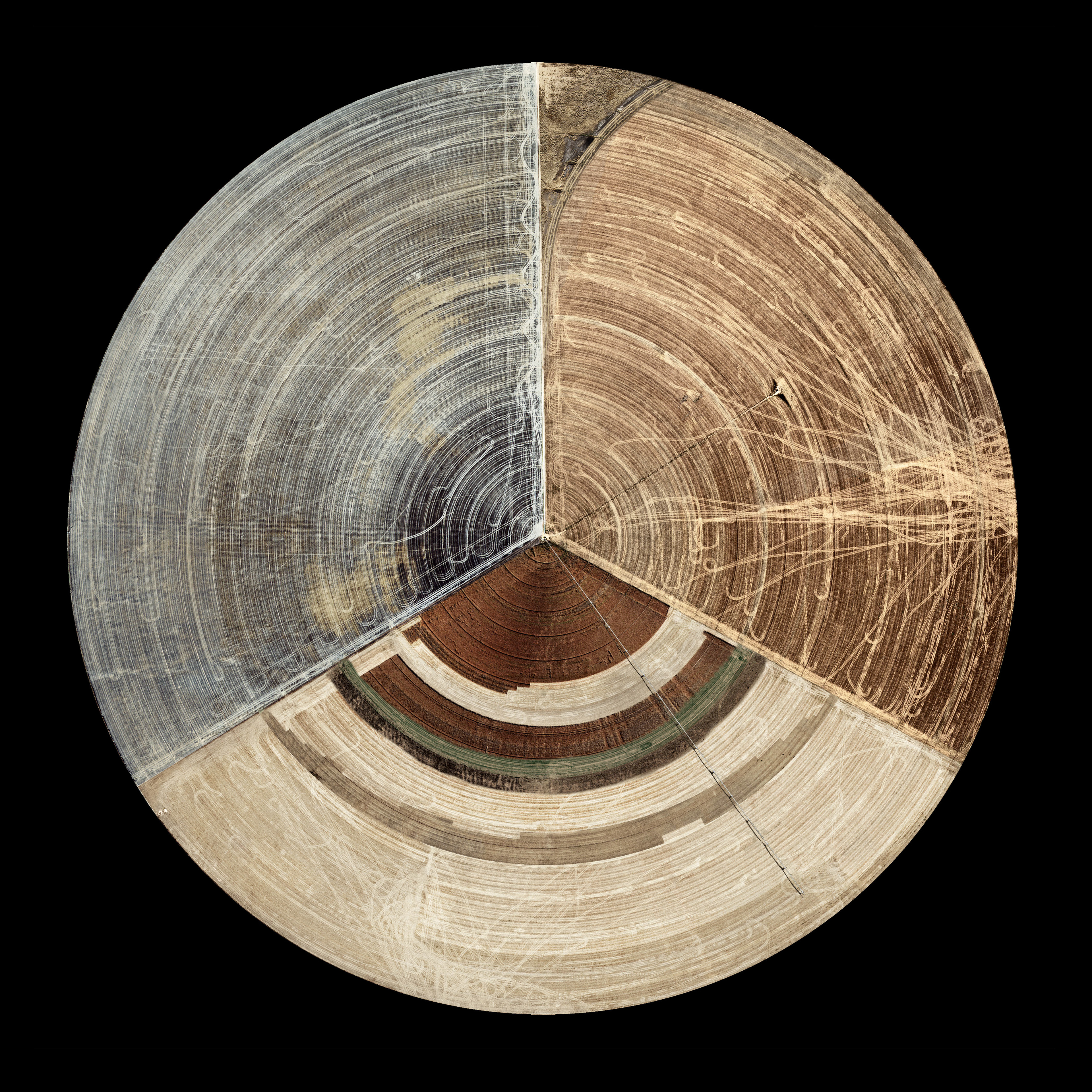
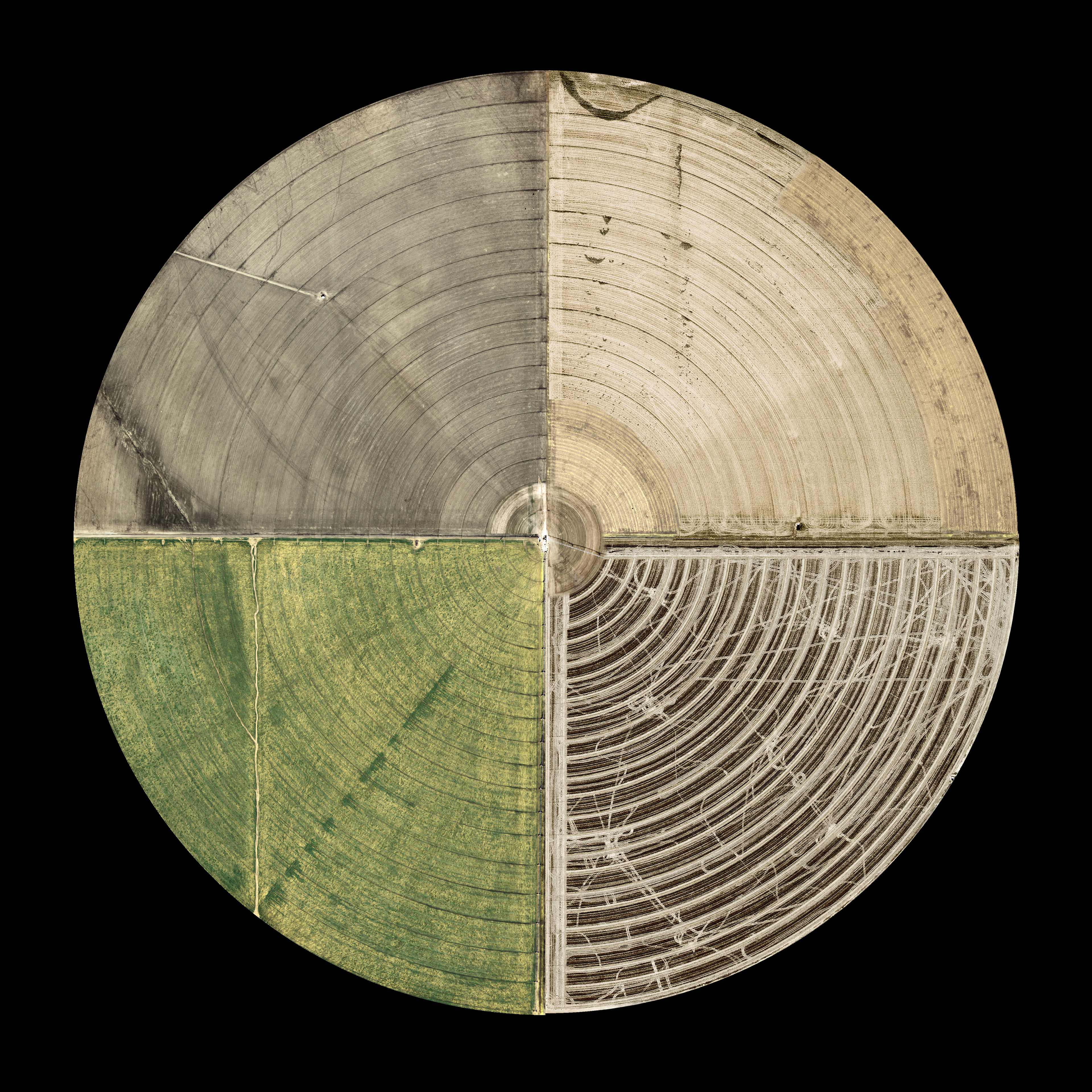
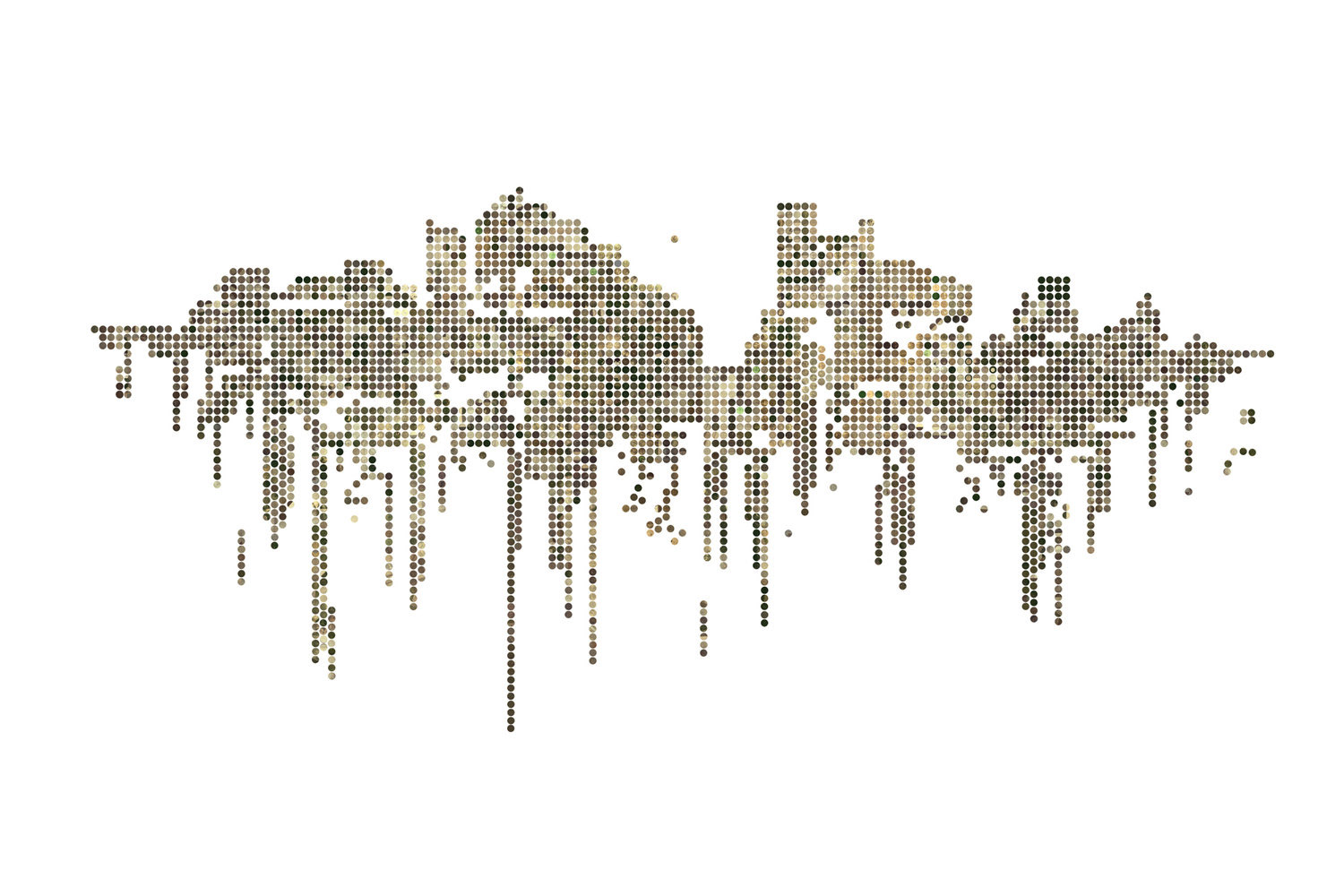
7,586 Farms For Every Patent Monsanto Owns
36x36” Pigment Print Mounted on Dibond, Custom Welded Metal Frame
2018
2018
The Monsanto Company has significantly influenced how food is produced.
It has created new global markets by introducing exclusive plant genes, new
processing technologies, and novel methods of cultivating food. As of 2018,
it held 7,586 patents for food genes and related technologies in the United
States. The pivotally irrigated farms in this artwork represent the uniformity
that Monsanto has pushed to simplify global systems.
It has created new global markets by introducing exclusive plant genes, new
processing technologies, and novel methods of cultivating food. As of 2018,
it held 7,586 patents for food genes and related technologies in the United
States. The pivotally irrigated farms in this artwork represent the uniformity
that Monsanto has pushed to simplify global systems.
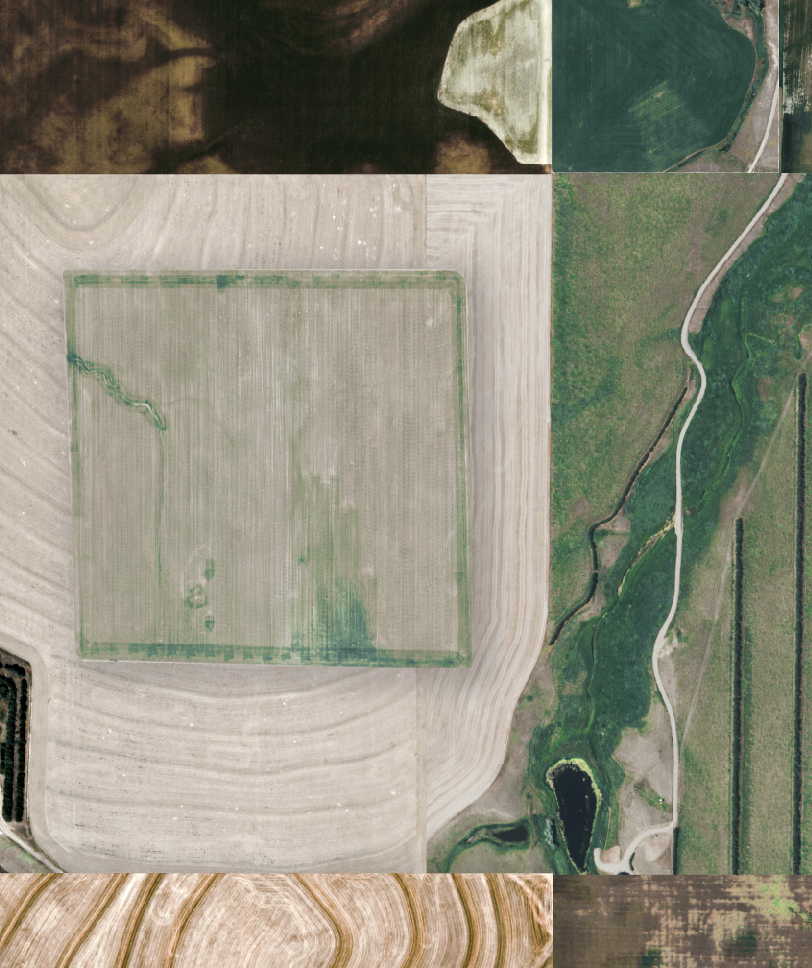
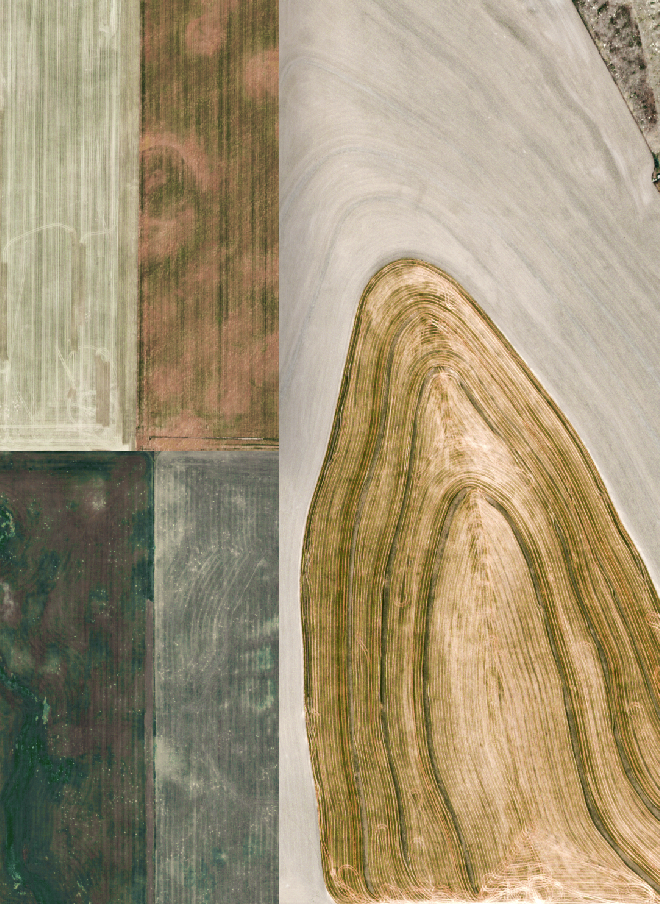
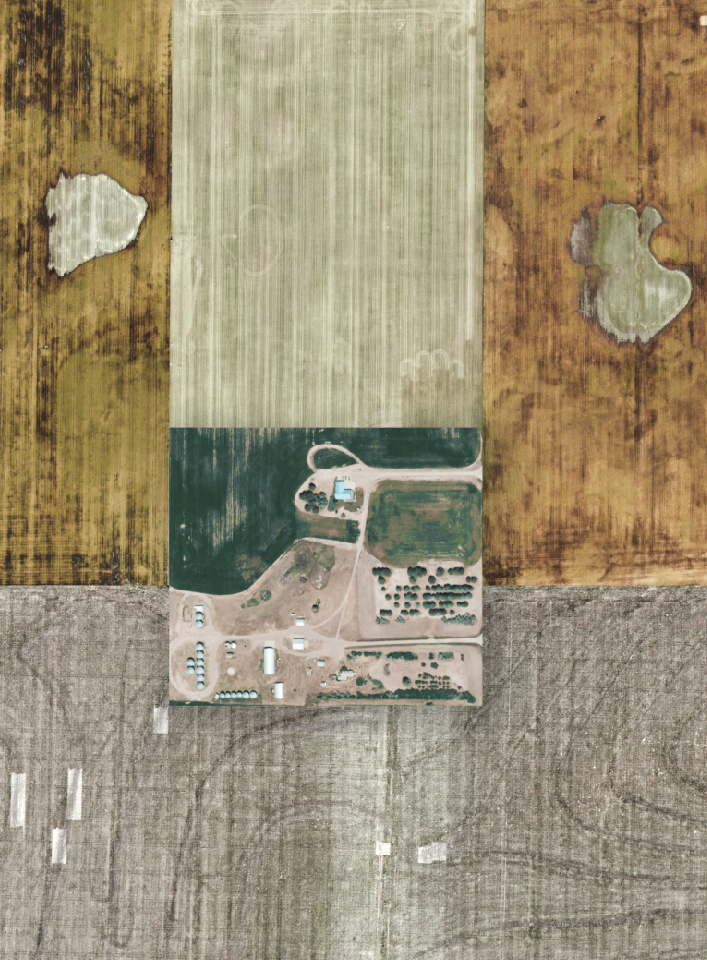

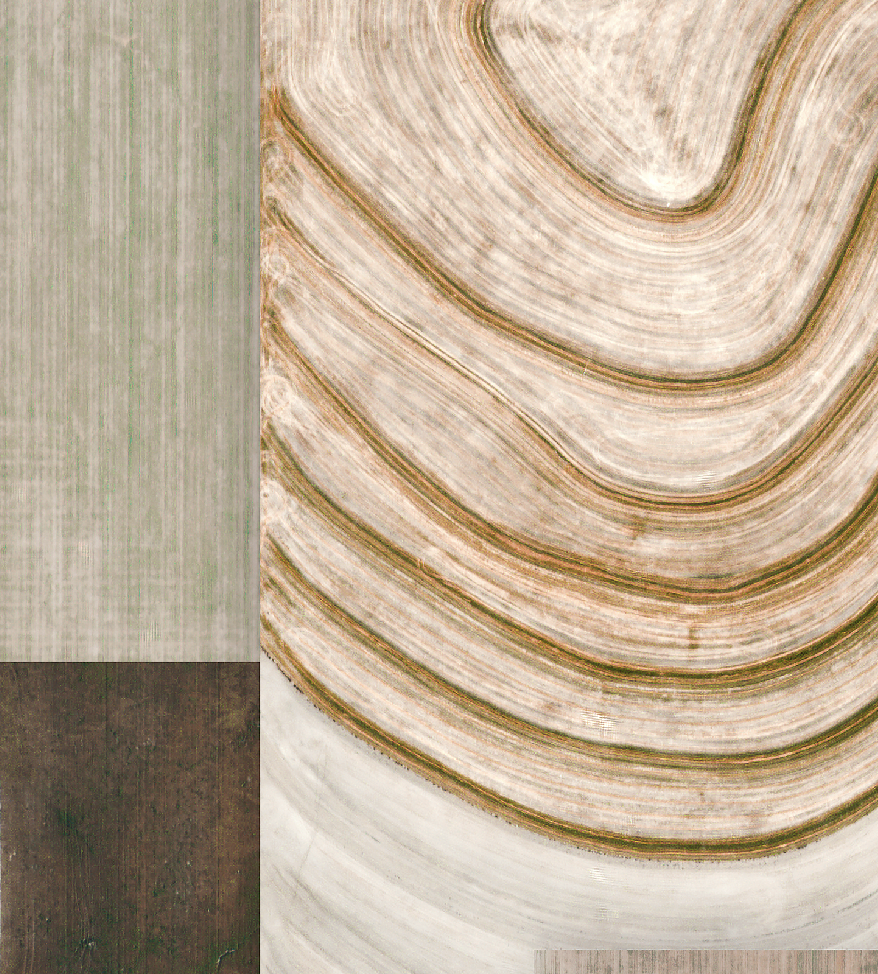

American Tapestry
52x98” Collaged Aerial Farm Images
2023
These collaged aerial images are symbolic of how farms are used as pieces
in the larger economic puzzle of global development. Segregating elements,
reorganizing, and altering to fit a new purpose, this work evokes acts of
physical intervention and categorization of land into its profitable effects.
While initially a digital collage, ideal execution would include individually
printing each layer on canvas and manually piecing together.
in the larger economic puzzle of global development. Segregating elements,
reorganizing, and altering to fit a new purpose, this work evokes acts of
physical intervention and categorization of land into its profitable effects.
While initially a digital collage, ideal execution would include individually
printing each layer on canvas and manually piecing together.
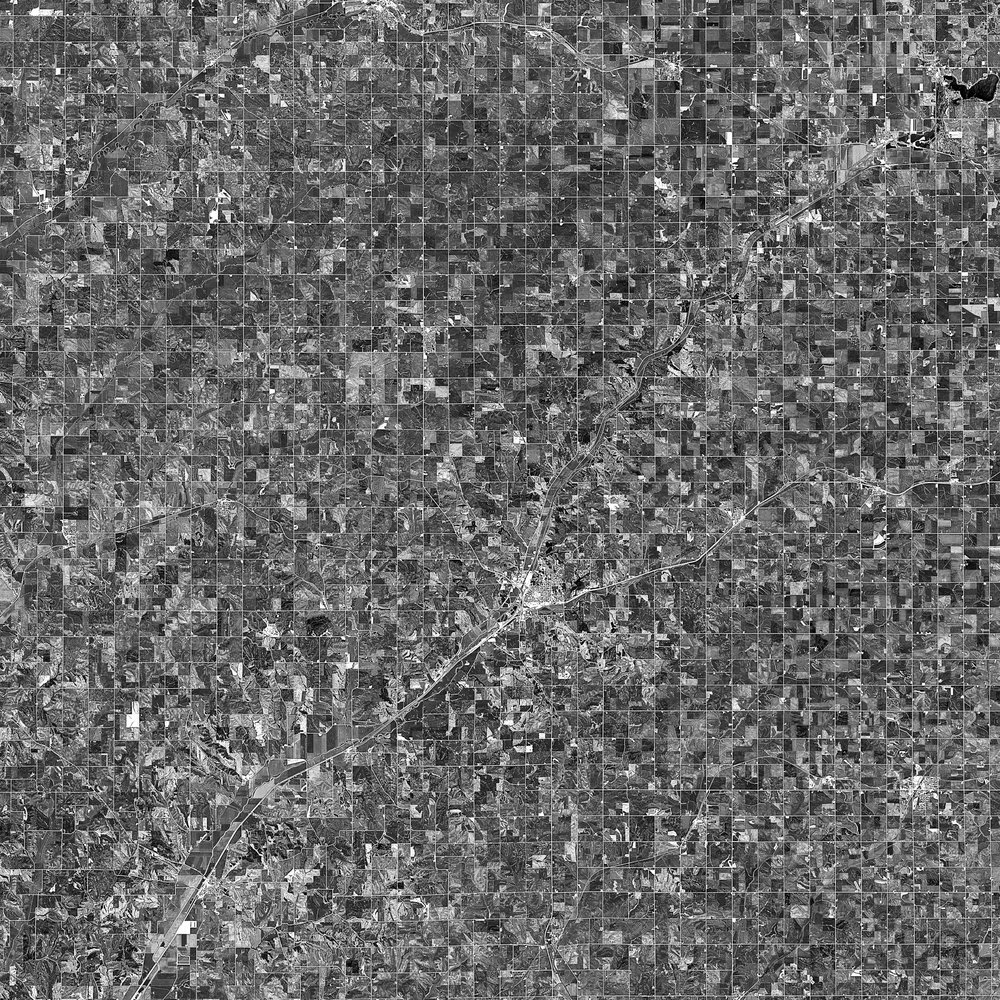

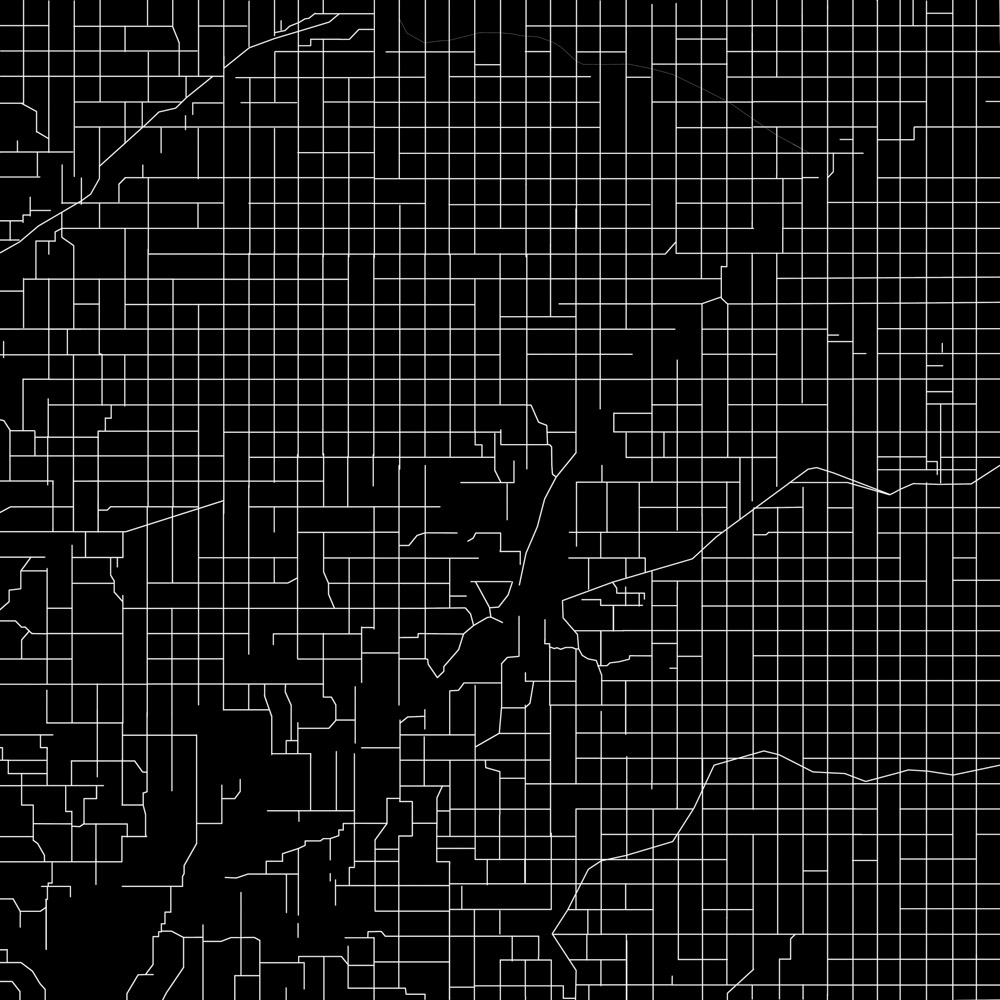
Absence and Presence
Triptych, 15x45” Aerial Images Digitally Altered
2018
The first image is a typical aerial photo of Kansas farms. The second leaves
only roads and infrastructure, with no land or water visible. Based on
the previous reduction, the third, emphasizes human preferred design by
straightening roads, eliminating inefficient paths, and disregarding the reality
of the landscape.
only roads and infrastructure, with no land or water visible. Based on
the previous reduction, the third, emphasizes human preferred design by
straightening roads, eliminating inefficient paths, and disregarding the reality
of the landscape.